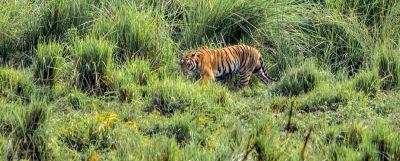Places to Visit
From the wildernesses of national parks to the stillness of temple sanctuaries, Assam provides various experiences that arrest our senses and feed our spirits. Here are the top and best places to visit in Assam:
Kaziranga National Park: The serene Kaziranga National Park is a well-acclaimed national park placed at the core of Assam and holds the prestigious title of being a UNESCO World Heritage site. It is located in the lush landscapes of two districts. This calm sanctuary covers 430 sq km. It provides shelter for the largest population of Indian one-horned rhinoceroses and many endangered species such as tigers, elephants or wild water buffaloes.
The Wildlife of Kaziranga: An incredible amount of wildlife lives within the flourishing ecosystem of the National Park. It is most famous for being home to such animals as the majestic one-horned rhinoceroses, wild buffalo, and also royal Bengal tigers. Nonetheless, this National park has other larger mammals, too, like Indian elephants along with some others, including but not limited to wild boar, swamp deer or Barasingha (Rucervusduvaucelii), and Indian bison (Bos gaurus). The reptile population in this park is also diverse. It boasts many types of snakes, e.g., king cobras (Ophiophagus hannah) Russel vipers (Daboia russelii), among others while there are lizards such as common Bengal monitor or common Indian monitor lizard and Indian water monitors too.
Furthermore there exist abundant fish species in waters while marshy areas along river banks harbor turtles such as Gangetic Softshell Turtle as well as Ind
+Read More
Get your free quote
Attractions in Assam
Popular Tours in Assam
Attractions in Assam
Latest Articles
Help You Travel Better
















